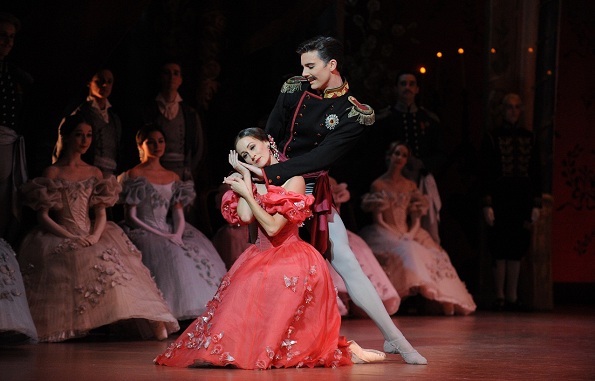Book: Cranko: The man and his choreography
Author: Ashley Killar, Troubador Publishing, December 2022
Ashley Killar’s book, Cranko: The man and his choreography, is a splendid biography of the major choreographer John Cranko, is warmly written and extensively researched. Readers follow the ups and downs of Cranko’s great successes and dire flops. Much attention is paid to the structure and context of Cranko’s work, his work processes, family life, friends, etc., and some quietly kept secrets. The book is divided into 28 chapters and at the back includes a list of Cranko’s complete works, appendixes, a bibliography, acknowledgements, references and an index. Photos are scattered throughout.
Killar trained at The Royal Ballet School, starting his career with Cranko at Stuttgart Ballet. Cranko’s work inspired Killar throughout his career with Scottish Ballet, Sadler’s Wells Royal Ballet and as artistic director of Napac Dance Company and the Royal New Zealand Ballet. Students from Killar’s vocational ballet school in Sydney dance in companies around the world.
In 1954, Cranko flew to Australia to mount his Pineapple Poll for the Borovansky Ballet, the forerunner of The Australian Ballet. The Australian Ballet itself has had a long association with Cranko’s works – his Romeo and Juliet has been in the repertoire since it began in 1962 (with a dazzling season just completed at the Sydney Opera House), and has also, for example, performed his Onegin and The Taming of the Shrew. In Killar’s book, there are mentions of Sir Robert Helpmann, Anne Woolliams, Frank Tait and Peggy van Praagh, all heavily involved with The Australian Ballet.

Having been lauded recently as ‘The German Ballet Miracle’, by The New York Times, Cranko’s sudden death mid-Atlantic flight in 1973 meant the world lost one of its major choreographers. Born in South Africa, living in Rustenburg, Capetown and Johannesburg, Cranko moved to London to further his dance career at the age of 18 and never returned to his country of birth. He speedily became a resident choreographer with what is now The Royal Ballet. Killar deftly places Cranko’s life in the background of related arts and socio-political history of the era (e.g. the fraught situation in Berlin with the Wall, and the politics in Russia).
Killar details Cranko’s various working partnerships with various eminent theatre people such as Benjamin Britten, John Piper, Jurgen Rose, Sir Charles Mackeras, Michael Tippett, Peter Wright, and Fonteyn and Nureyev, as well as Sir Kenneth MacMillan. Much is made of his great friendship with John and Mfanwy Piper. Cranko developed Cranks, a popular musical revue and devised audience favourites such as Pineapple Poll and The Lady and the Fool (both also have been performed by The Australian Ballet ). Killar also discusses the influence of George Balanchine and Martha Graham on Cranko’s works.
While with what is now The Royal Ballet, Killar examines his at times somewhat fraught relationships with Ninette de Valois and Frederick Ashton in particular. In the late 1950s, his reputation became somewhat damaged, and there was a major scandal. Cranko ended up moving to Germany — in particular, Stuttgart. As Artistic Director and choreographer of the Stuttgart Ballet, he was generally a great success, and he led tours of Europe, Russia and the US.
Killar’s biography puts Cranko in context of his life and times and discreetly mentions his private life. We gain an understanding of the many layers to Cranko’s personality – a heavy smoker, Cranko did not have an official ‘office’ but was accessible at all times to his dancers, who he considered family, in the canteen, with the phone on the counter. He was generous, loyal, had a bubbling sense of fun, a splendid musical ear, was full of finesse and banter, yet sometimes hid an audacious, exuberant lifestyle.
Killar ensures that Cranko’s legacy lives on.
By Lynne Lancaster of Dance Informa.













